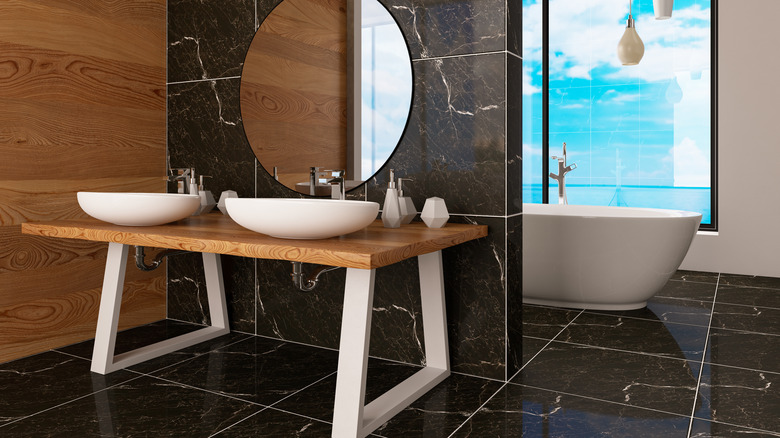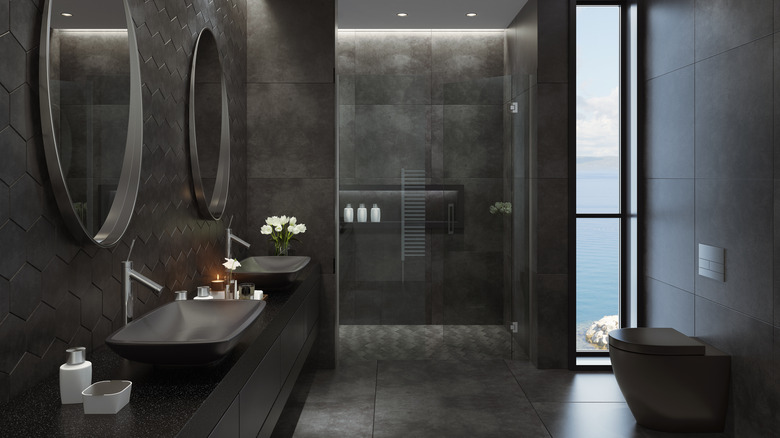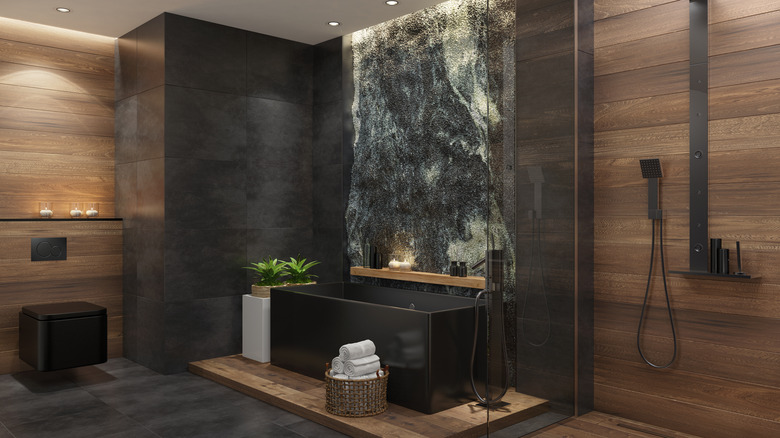What To Consider Before Using Black Tile For Your Bathroom Floors
In recent years, the light and bright aesthetic has given way to darker shades. Black has risen as a favorite neutral because of its versatility. Using black tiles on your floor can be a statement whether your interior leans more traditional, modern, minimalist, or anything in between.
Black tiles are one of the best ways to instantly add a bold detail to an interior. These tiles are elegant and timeless, which means they'll still look great even as the trend cycle swings. Darker colors can also help make a room appear larger. Black tiles can make walls appear as if they're further away, which can make the space look larger.
While black tile may offer some aesthetic benefits, it's also important to realize that this color of tile can have more visible water spots or streaks. For example, splashes from the bathtub or drips after getting out of the shower can leave visible marks on the tiles. These aren't typically permanent marks; however, this may mean more maintenance. But for busy households who don't want to see all the dust and watermarks, black might not be the color.
How much natural light does the bathroom get
If you're considering black tiles for your bathroom, you may want to first consider how much sunlight your bathroom gets. Black absorbs heat more, so black tiles can become uncomfortably warm on a pretty sunny day if they're being hit with tons of natural light. A window with large windows, a south-facing bathroom, or a home in a hot climate may not want to have black tile floors. However, if you're still set on black tile floors, consider the material of the tiles. Ceramic and porcelain have high thermal conductivity, which means they retain heat longer than other materials.
Black tiles can make an interior look larger, but when not done right, black floor tiles can be overwhelming, making a room look smaller and darker. An all-black bathroom can look sleek and modern, but it can also look cave-like and monotonous. Natural light can help combat this by adding some brightness back into the space, allowing you to illuminate the bathroom. You can pair black tile floors with a lighter color on the walls. Or, if you want both black walls and floors, consider using lighter fixtures to help break up the darkness.
Consider the bathroom traffic
As with any bathroom, you want to consider who will be using it and how that traffic might affect the materials. Black tiles often do well at concealing dirt. However, as stated, water drip and dried marks tend to be more visible. Similarly, if black tiles get scratched, those marks will also be more noticeable. This isn't to say that black tiles are less durable than other colors, but rather that if the coating or finish is scratched or chipped, these imperfections won't be as easily hidden. High-gloss finishes, in particular, are more prone to getting scratched.
This may mean being cautious about which bathrooms you put black tile in. High-traffic powder rooms or kids' bathrooms, where they may be a little rougher, may not be the best option to feature this kind of tile. It's also important to be cautious about dropping heavy or sharp objects, as those blows can cause chips and cracks. You will also not want to drag any furniture to avoid potentially scratching the tiles, so be cautious with benches, stools, and storage shelves.


